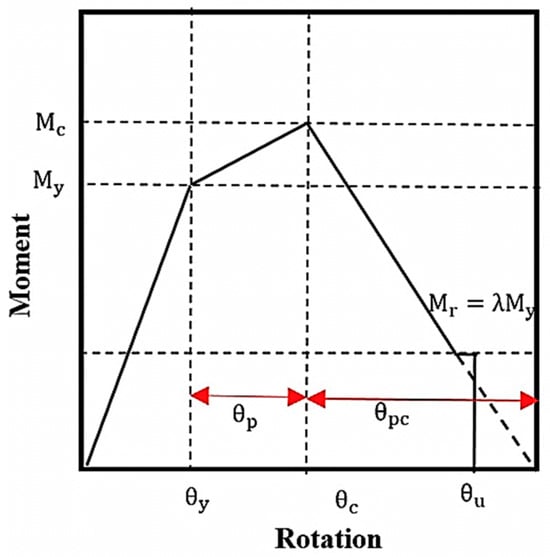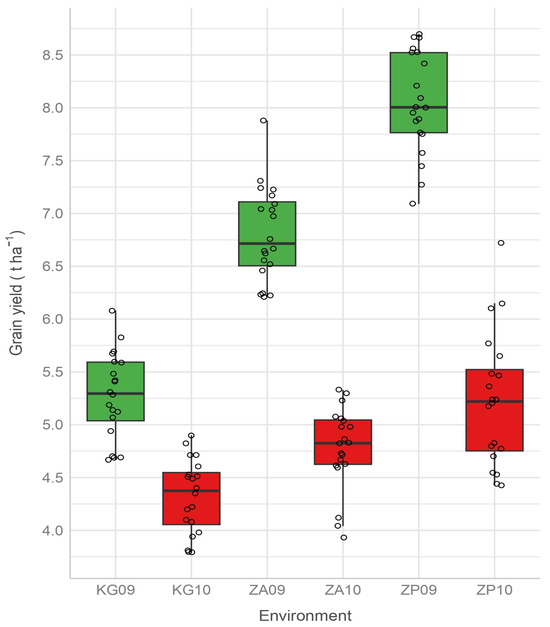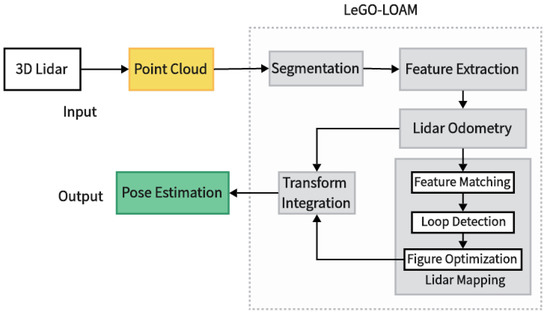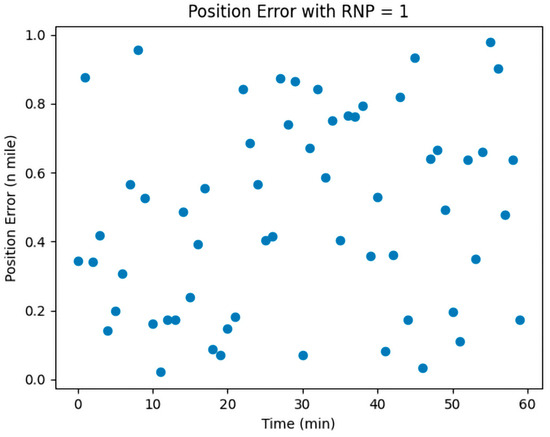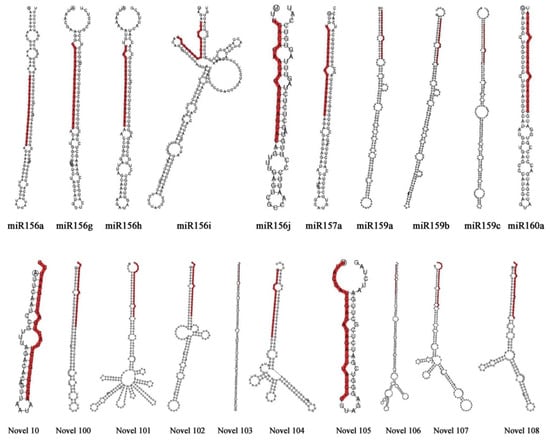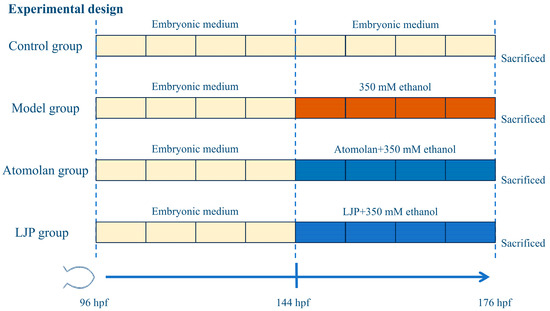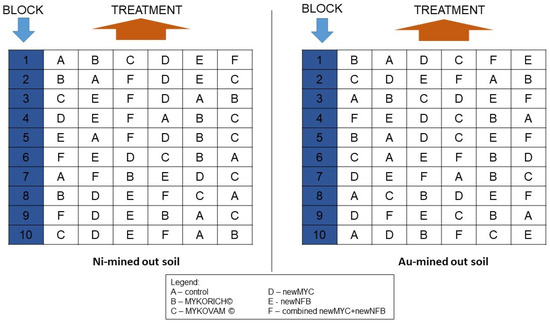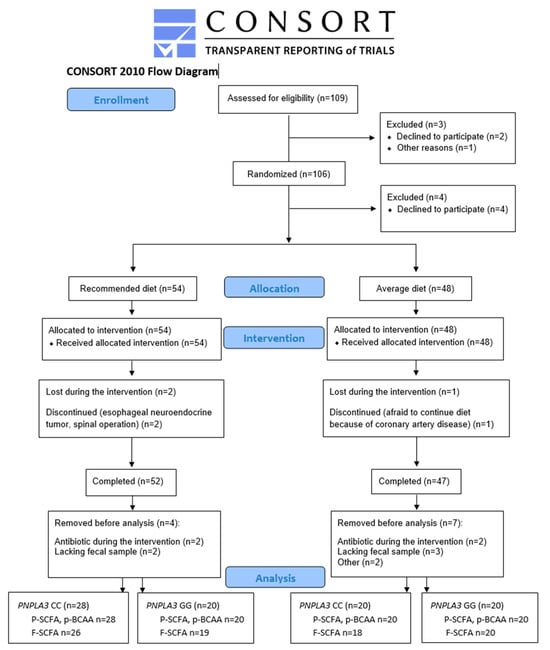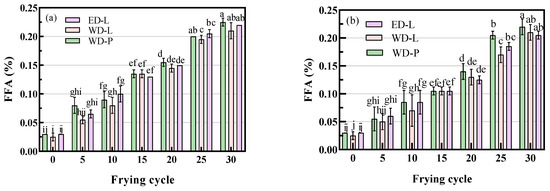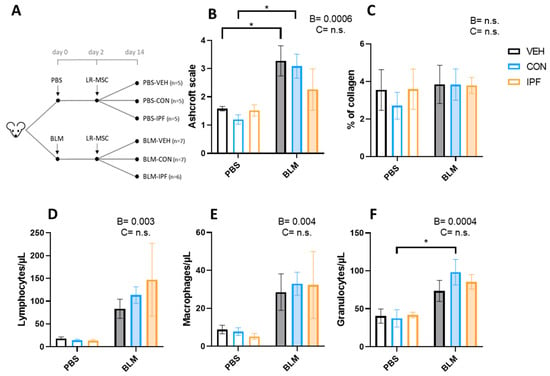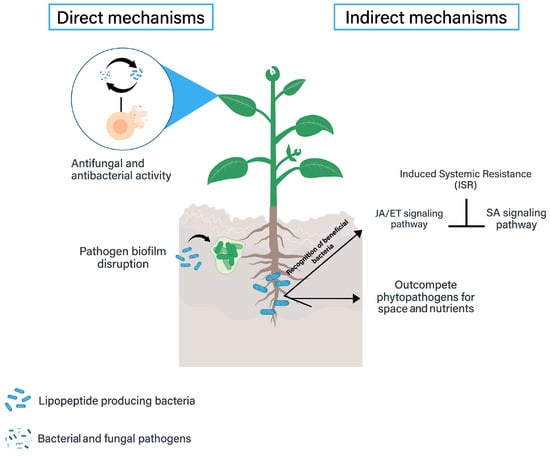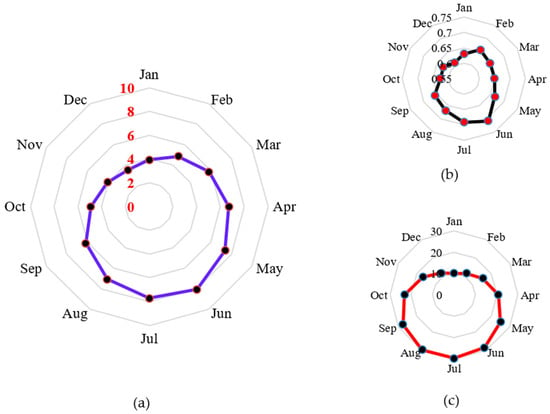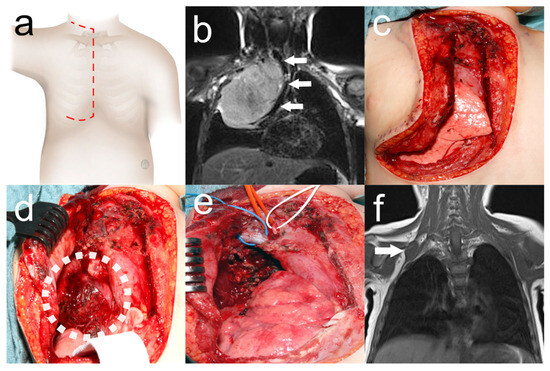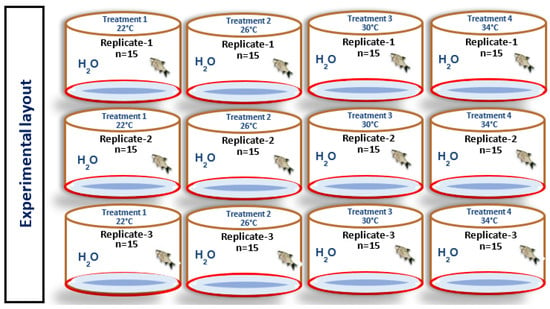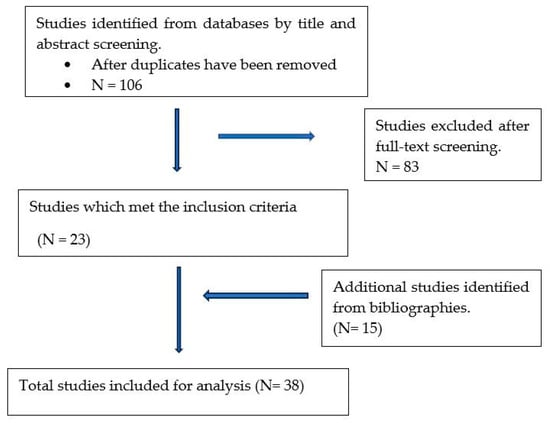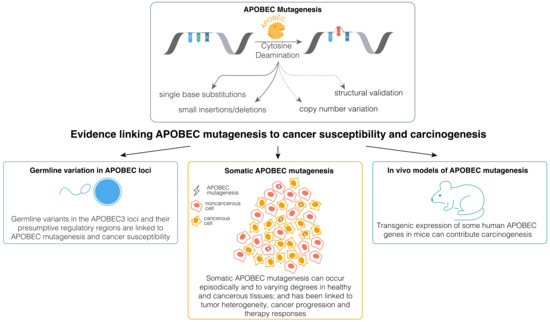The GG genotype of the Patatin-like phosphatase domain-containing 3 (
PNPLA3), dietary fat, short-chain fatty acids (SCFA) and branched-chain amino acids (BCAA) are linked with non-alcoholic fatty liver disease. We studied the impact of the quality of dietary fat on plasma (p) and fecal (f) SCFA and p-BCAA in men homozygous for the
PNPLA3 rs738409 variant (I148M). Eighty-eight randomly assigned men (age 67.8 ± 4.3 years, body mass index 27.1 ± 2.5 kg/m
2) participated in a 12-week diet intervention. The recommended diet (RD) group followed the National and Nordic nutrition recommendations for fat intake. The average diet (AD) group followed the average fat intake in Finland. The intervention resulted in a decrease in total p-SCFAs and iso-butyric acid in the RD group (
p = 0.041 and
p =0.002). Valeric acid (p-VA) increased in participants with the GG genotype regardless of the diet (RD, 3.6 ± 0.6 to 7.0 ± 0.6 µmol/g,
p = 0.005 and AD, 3.8 ± 0.3 to 9.7 ± 8.5 µmol/g,
p = 0.015). Also, genotype relation to p-VA was seen statistically significantly in the RD group (CC: 3.7 ± 0.4 to 4.2 ± 1.7 µmol/g and GG: 3.6 ± 0.6 to 7.0 ± 0.6 µmol/g,
p = 0.0026 for time and
p = 0.004 for time and genotype). P-VA, unlike any other SCFA, correlated positively with plasma gamma-glutamyl transferase (
r = 0.240,
p = 0.025). Total p-BCAAs concentration changed in the AD group comparing
PNPLA3 CC and GG genotypes (CC: 612 ± 184 to 532 ± 149 µmol/g and GG: 587 ± 182 to 590 ± 130 µmol/g,
p = 0.015 for time). Valine decreased in the RD group (
p = 0.009), and leucine decreased in the AD group (
p = 0.043). RD decreased total fecal SCFA, acetic acid (f-AA), and butyric acid (f-BA) in those with CC genotype (
p = 0.006, 0.013 and 0.005, respectively). Our results suggest that the
PNPLA3 genotype modifies the effect of dietary fat modification for p-VA, total f-SCFA, f-AA and f-BA, and total p-BCAA.
Full article
 IJMS
IMPACT
IJMS
IMPACT Sustainability
IMPACT
Sustainability
IMPACT Applied Sciences
IMPACT
Applied Sciences
IMPACT Sensors
IMPACT
Sensors
IMPACT JCM
IMPACT
JCM
IMPACT Molecules
IMPACT
Molecules
IMPACT Energies
IMPACT
Energies
IMPACT Materials
IMPACT
Materials
IMPACT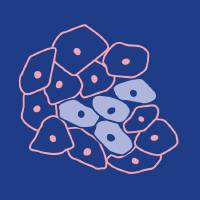 Cancers
IMPACT
Cancers
IMPACT Remote Sensing
IMPACT
Remote Sensing
IMPACT Electronics
IMPACT
Electronics
IMPACT Foods
IMPACT
Foods
IMPACT Water
IMPACT
Water
IMPACT Animals
IMPACT
Animals
IMPACT Mathematics
IMPACT
Mathematics
IMPACT Nutrients
IMPACT
Nutrients
IMPACT Polymers
IMPACT
Polymers
IMPACT Plants
IMPACT
Plants
IMPACT Buildings
IMPACT
Buildings
IMPACT Biomedicines
IMPACT
Biomedicines
IMPACT Agronomy
IMPACT
Agronomy
IMPACT Healthcare
IMPACT
Healthcare
IMPACT Diagnostics
IMPACT
Diagnostics
IMPACT Nanomaterials
IMPACT
Nanomaterials
IMPACT Processes
IMPACT
Processes
IMPACT Cells
IMPACT
Cells
IMPACT Microorganisms
IMPACT
Microorganisms
IMPACT JMSE
IMPACT
JMSE
IMPACT Forests
IMPACT
Forests
IMPACT Medicina
IMPACT
Medicina
IMPACT Viruses
IMPACT
Viruses
IMPACT Micromachines
IMPACT
Micromachines
IMPACT Agriculture
IMPACT
Agriculture
IMPACT Pharmaceutics
IMPACT
Pharmaceutics
IMPACT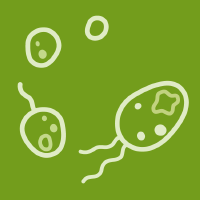 Life
IMPACT
Life
IMPACT Pharmaceuticals
IMPACT
Pharmaceuticals
IMPACT Biomolecules
IMPACT
Biomolecules
IMPACT Symmetry
IMPACT
Symmetry
IMPACT Antioxidants
IMPACT
Antioxidants
IMPACT Genes
IMPACT
Genes
IMPACT Coatings
IMPACT
Coatings
IMPACT IJERPH
IJERPH
 Atmosphere
IMPACT
Atmosphere
IMPACT Metals
IMPACT
Metals
IMPACT Vaccines
IMPACT
Vaccines
IMPACT Religions
IMPACT
Religions
IMPACT Children
IMPACT
Children
IMPACT Land
IMPACT
Land
IMPACT JPM
IMPACT
JPM
IMPACT Brain Sciences
IMPACT
Brain Sciences
IMPACT Entropy
IMPACT
Entropy
IMPACT Antibiotics
IMPACT
Antibiotics
IMPACT Photonics
IMPACT
Photonics
IMPACT Bioengineering
IMPACT
Bioengineering
IMPACT Crystals
IMPACT
Crystals
IMPACT Minerals
IMPACT
Minerals
IMPACT Education Sciences
IMPACT
Education Sciences
IMPACT Horticulturae
IMPACT
Horticulturae
IMPACT Pathogens
IMPACT
Pathogens
IMPACT







